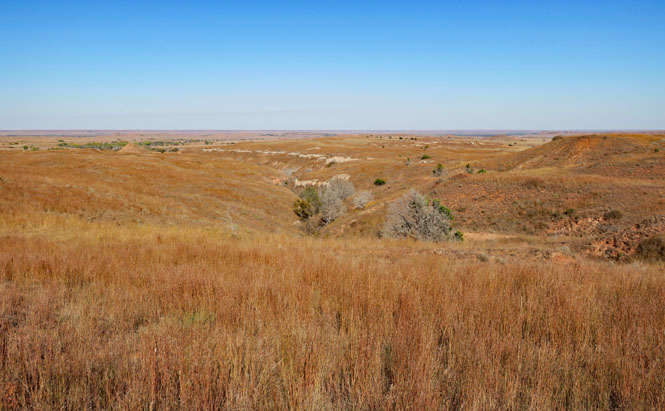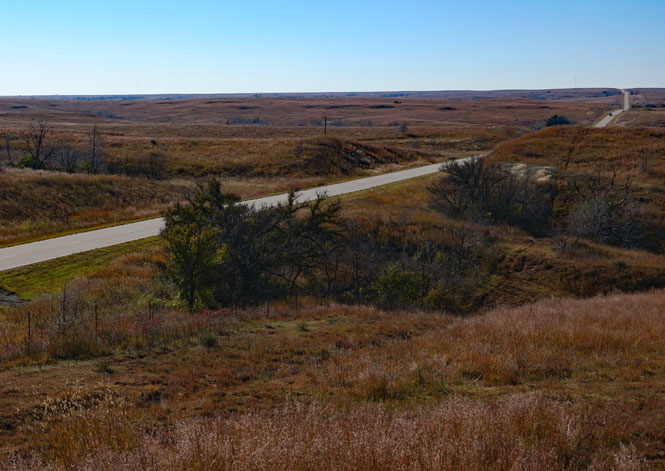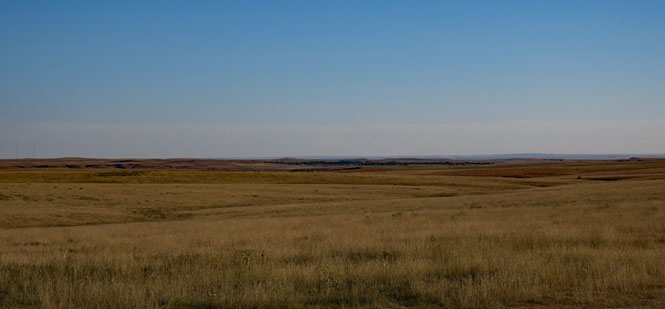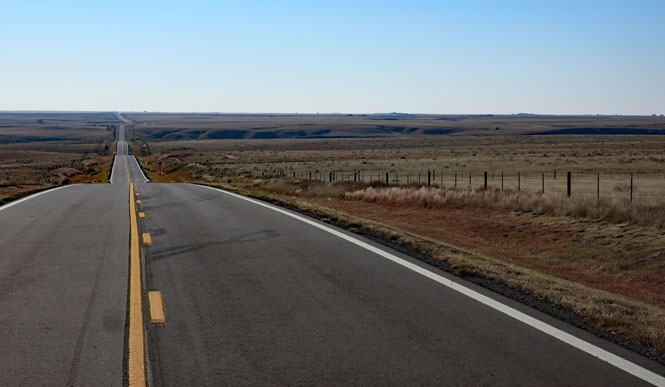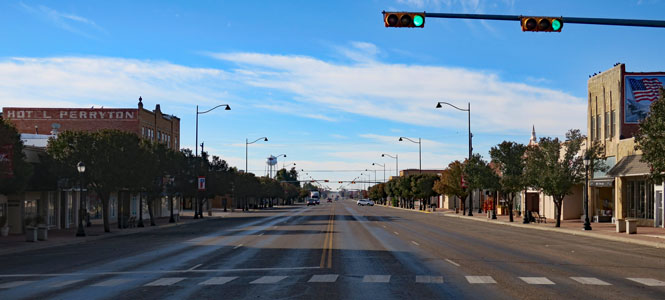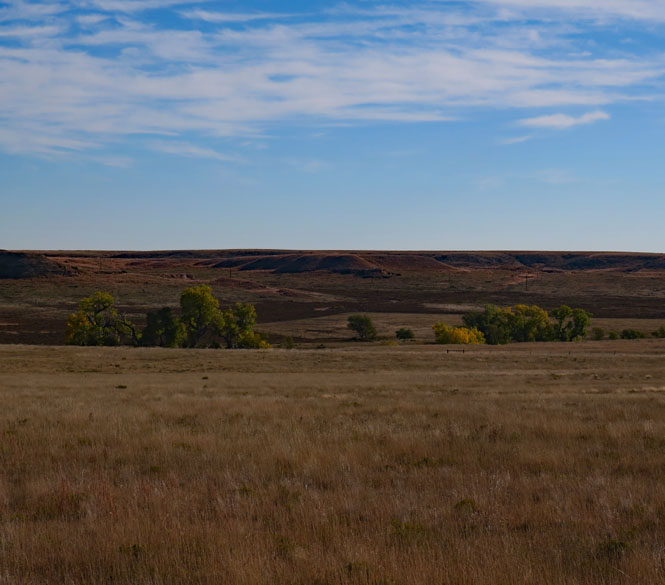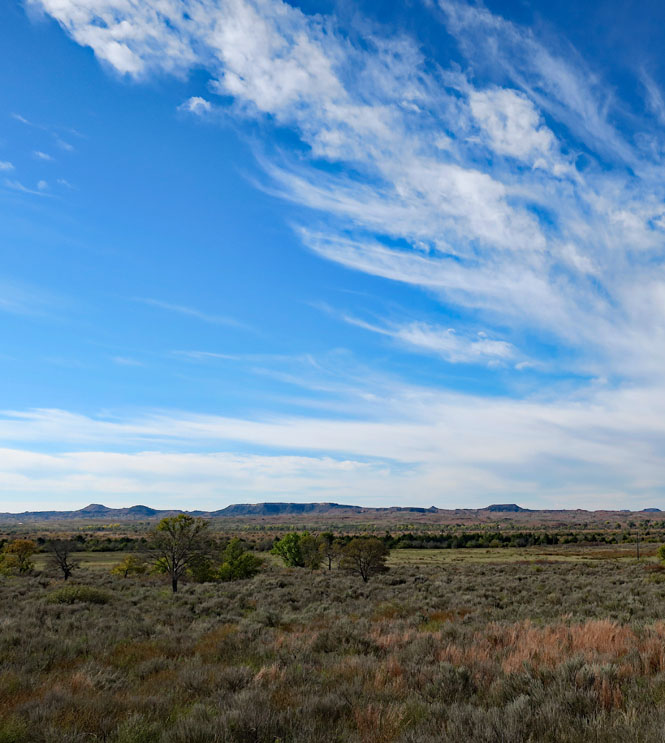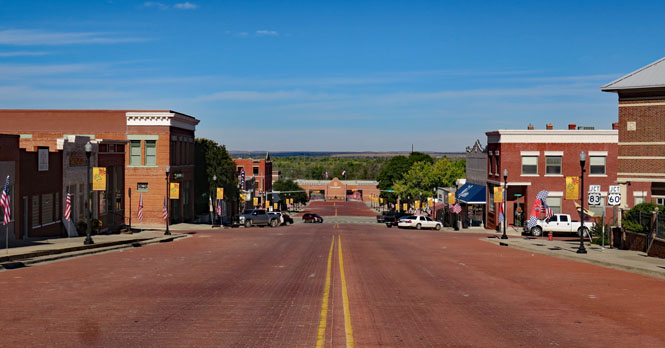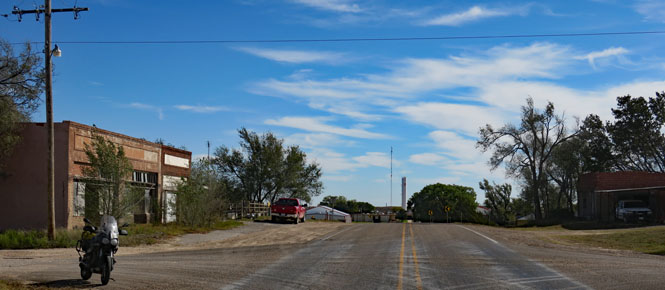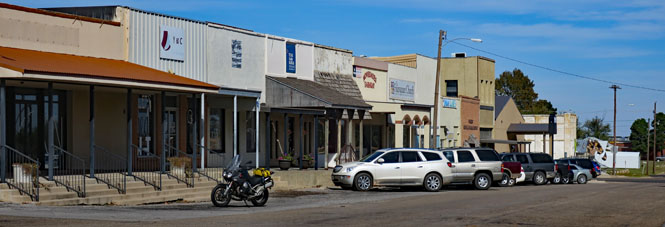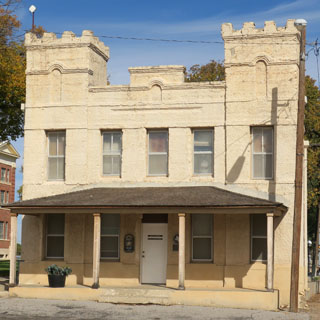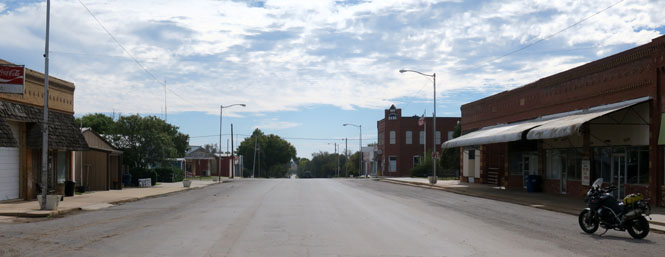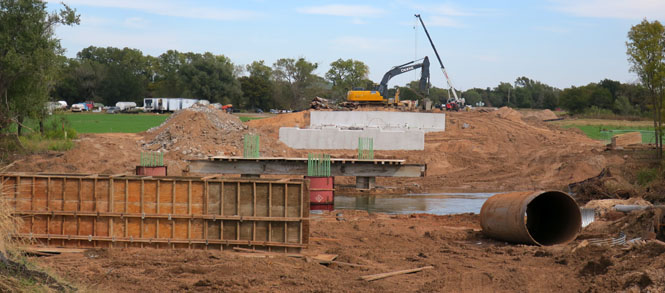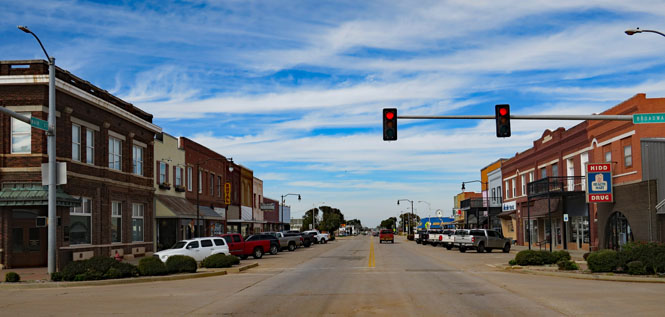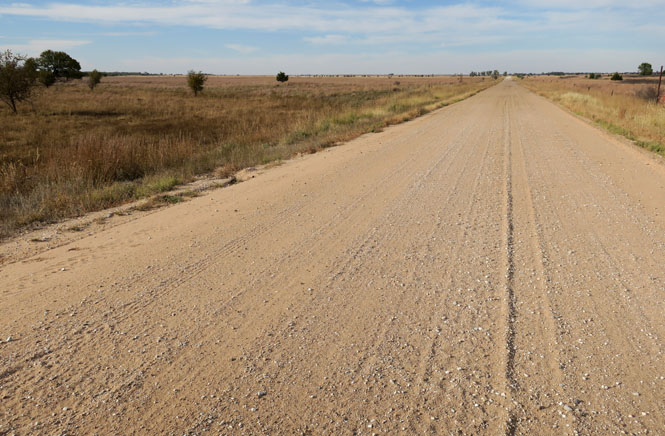October, 2018
Late October is the perfect time to ride into the Texas Panhandle and the high plains of western Oklahoma; there may not be many trees, but the ones that are there are bound to be in full autumn color.
 Kansas
Kansas
Attica, Kansas, where Main Street runs perpendicular to the Santa Fe tracks (as is always the case in this standard railroad town).
While Attica exists only because of the Santa Fe Railroad, the location of Medicine Lodge--with a good supply of water and nearby salt--has probably been occupied by people for centuries.
Gypsum Hills, Kansas (locally called the Gyp Hills). Kansas isn't often thought of for its mines (or quarries), but Gypsum has been industrially mined in this region since the mid-1800s, and the mineral was likely gathered long before that.
US-160 through Barber County.
West of the Gypsum Hills, it's still somewhat rolling. This is US-160.
 Texas
Texas
Perryton, Texas
Riding south on US-83.
Looking south over the broad Canadian River Valley.
I like how the small sink will gather sufficient water during rains to support this single tree. If you look beyond, you can tell just how difficult it is to be a tree around here.
Canadian, Texas. This location would have always been a natural stopping point along the trail that follows the Canadian River. Today, the BNSF Railroad runs through the town.
Briscoe, Texas. There's also a Briscoe County in Texas, but this little town is in Wheeler County.
Wheeler, Texas. I noticed a statue of an astronaut; it turns out that Alan Bean (fourth man to walk on the moon) was born here.
The Wheeler County courthouse still looks nice. On the other hand, I'm not sure what they were going for with that old jail building.

 Oklahoma
Oklahoma
Custer City, Oklahoma.
The Canton, Oklahoma bridge crossing over the North Canadian River is not here. The old steel truss bridges in Oklahoma are rapidly being torn down and replaced by uninspiring reinforced concrete. For now, look for an alternate route.
Fairview, Oklahoma.
Cherokee, Oklahoma.
 Kansas
Kansas
The Salt Fork of the Arkansas River begins in Kansas, just about here.
Oklahoma-58 is not much used, but it is--at the very least--paved. After crossing north in to Kansas, the pavement gives way to dirt and the road loses its highway number.



